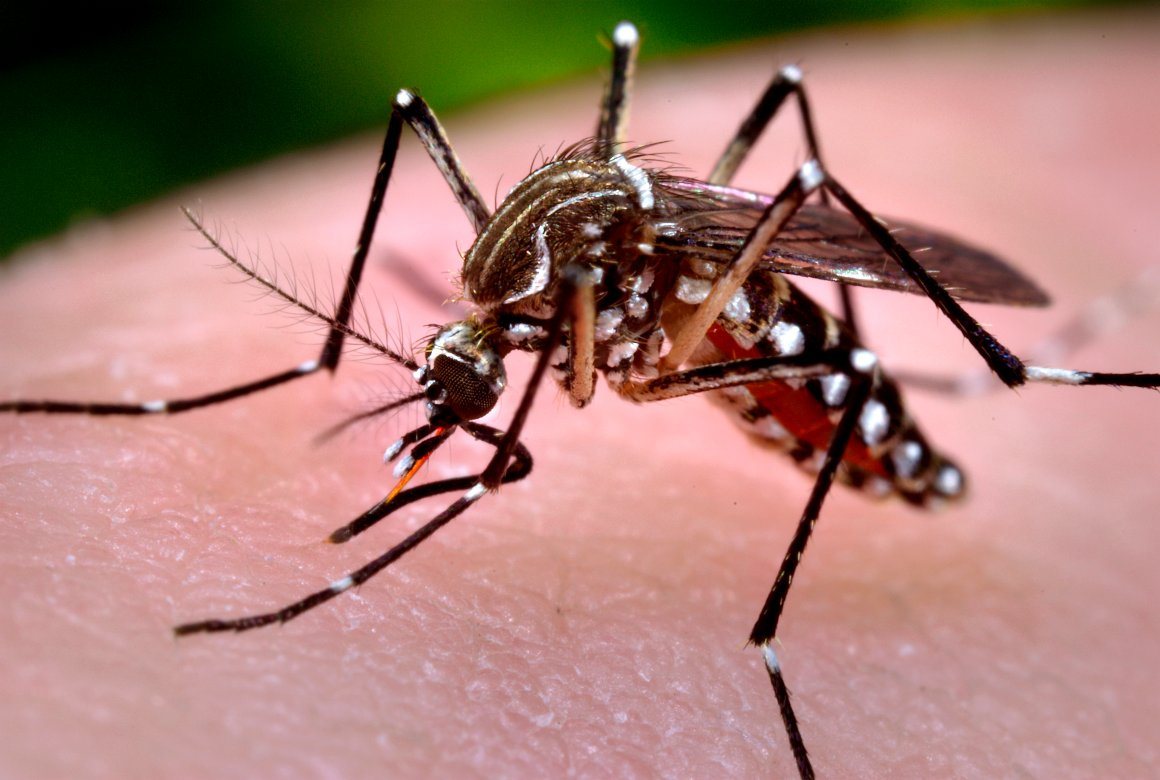Six dangerous invasive mosquitos have been caught in East San Jose, and the Santa Clara County Vector Control District is asking residents for help to keep them from gaining a foothold in the Bay Area.
The mosquitos belong to a disease carrying species Aedes aegypti and pose a serious public health risk, warned county officials.
“If we were to have Aedes aegypti established in our county, it would pose a great risk to human health and it would affect the quality of life that we have in our community,” said Edgar Nolasco, consumer and environmental protection agency director for Santa Clara County. “The goal here is to nip this in the bud and make sure they can’t breed.”
The mosquitoes aren’t native to California — though they have become established throughout the south and center of the state. Unlike most native species, aegypti is active at all times of the day, bites multiple times, and can carry Zika, Dengue, Yellow Fever, or Chikungunya.
While these diseases are rarely found in California, officials worry that the invasive mosquitoes might spread them if a traveler returns from a hot zone with an illness. The county has had occasional cases of those diseases among returning travelers, though they were not detected in the captured mosquitoes.
The species was previously identified and contained in late 2022, when the county trapped two mosquitoes in an industrial area. Now, officials say the current incident is more concerning, since it involves more mosquitoes across several properties in a residential area, right before spring and summer — when the mosquitos are most active.
“If we don’t get a handle on this, we could be in a bad situation,” said Nolasco.
The six female mosquitoes were trapped over the last two weeks along Machado Lane near Story Road. County workers have been setting up traps in the area, inspecting properties for mosquito larvae and standing water, and eliminating any larvae.
“Our first step is to do more surveillance, more trapping, more door to door inspection and to see what is the level of infestation,” said Nayer Zahiri, vector control district manager for Santa Clara County. “We do have a response plan.”
Should the mosquitoes spread, the county is considering different types of pesticide application. However, the county hopes to enlist local residents in eliminating the mosquitoes before they spread further.
The insects are about a quarter-inch long and are recognizable by the black and white stripes on their legs and bodies, and their eggs are tiny, appearing like bits of dirt to the naked eye. The mosquitoes lay their eggs by standing water.
Since the pests only move about a block away from where they hatch, the best way to stop them from spreading is to stop them from breeding. Officials urge residents to ensure that their homes have no sources of standing water outside — pet bowls, buckets, old tires, clogged gutters, and bird baths are all common candidates — and to cooperate with county inspectors, who are not allowed to enter homes and can only inspect for sources of standing water.
The eggs can also survive for a year without water — even through winter temperatures, so cleaning or scrubbing any containers that have eggs can help remove them. “Their eggs are sort of the cockroaches of mosquitoes,” said Nolasco. “They can endure extreme conditions.”
Despite the public health risk Nolasco advises community members to remain calm. “It’s not a moment of panic, It’s a moment of being very vigilant,” he said.
More information on the invasive mosquitoes is available at county and state websites.
Officials ask that residents experiencing mosquito bites during the day report them to the Vector Control District at (408) 918-4770 or vectorinfo@cep.sccgov.org.












